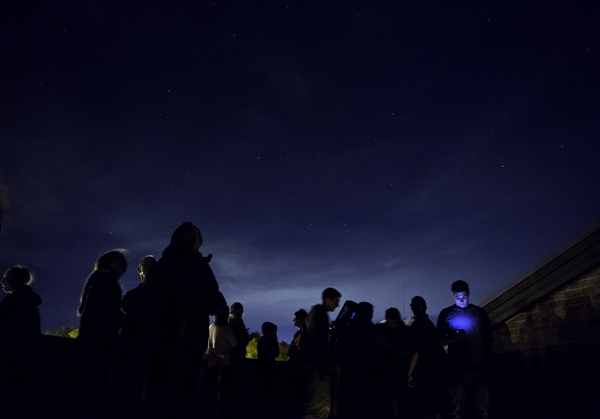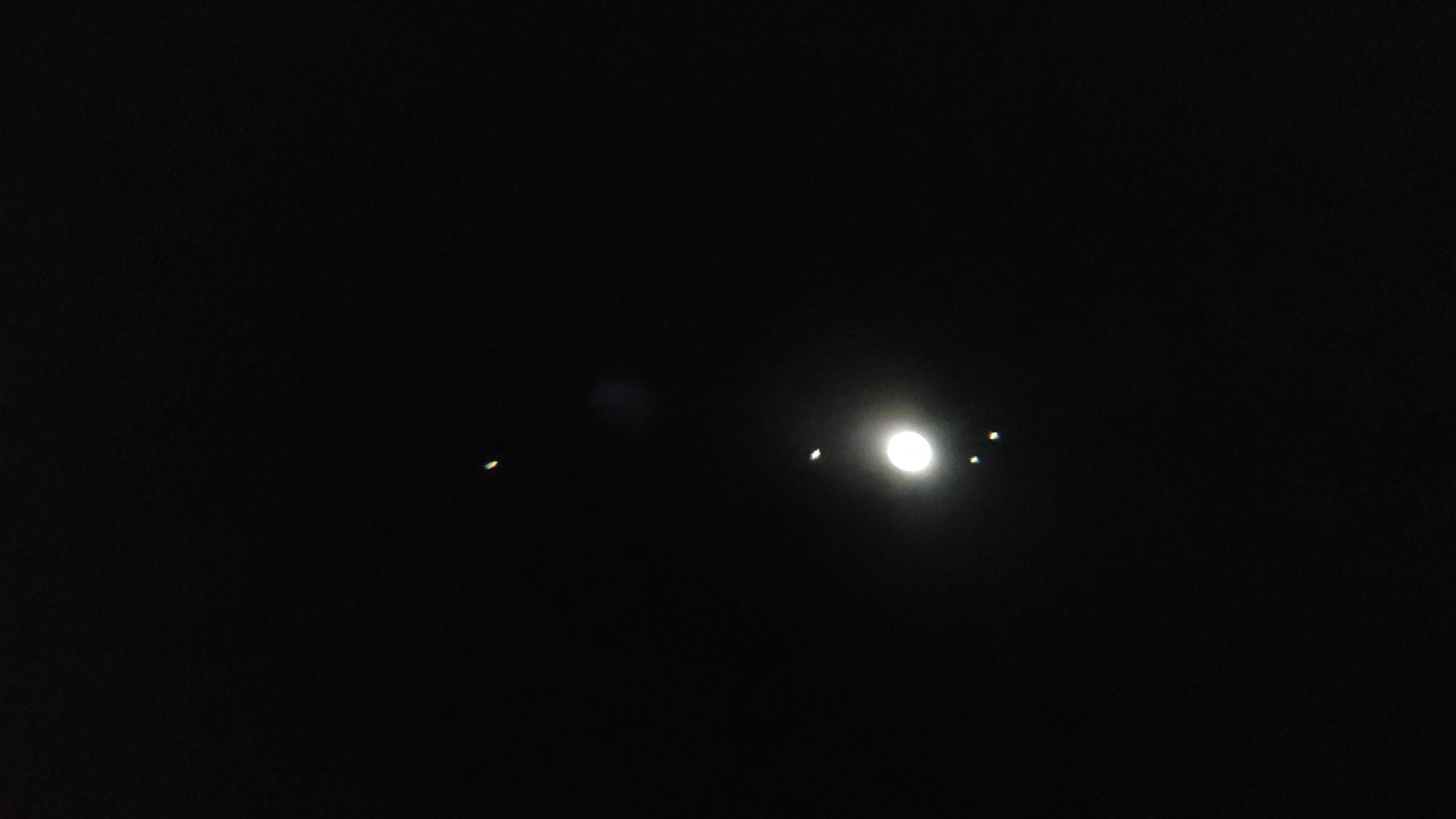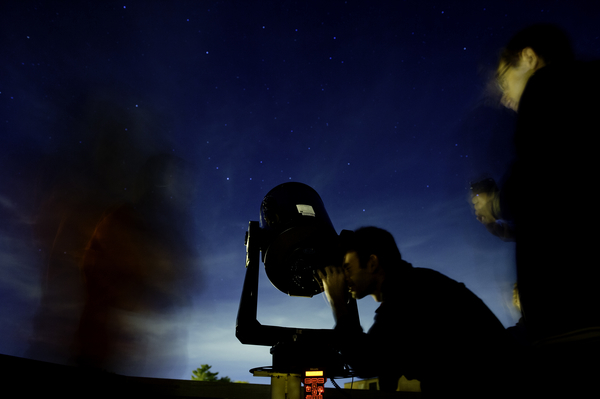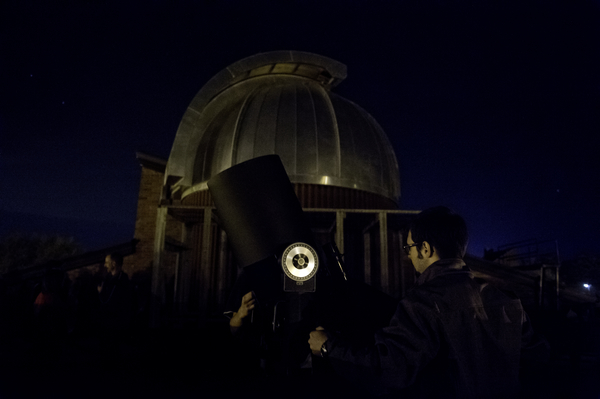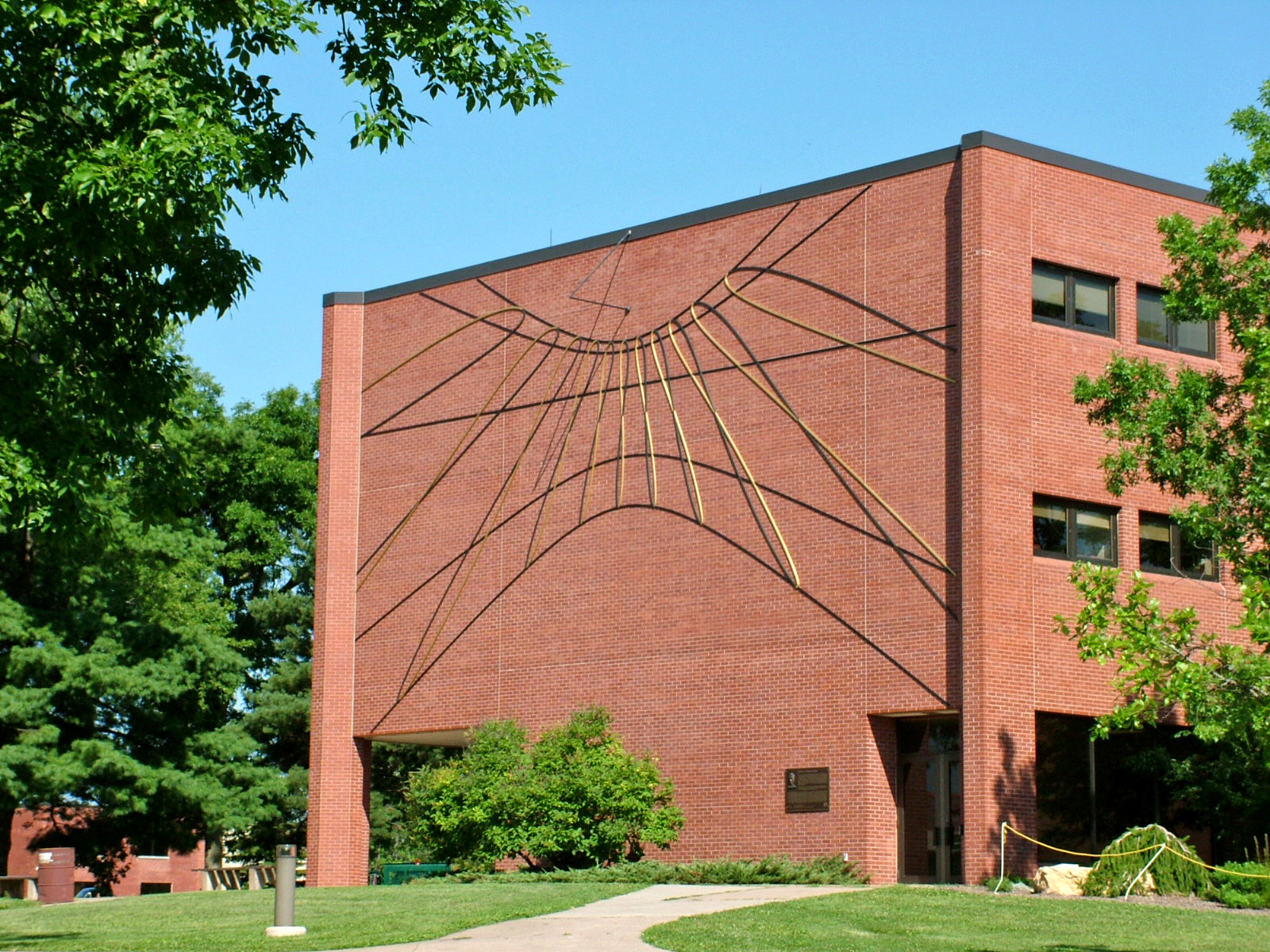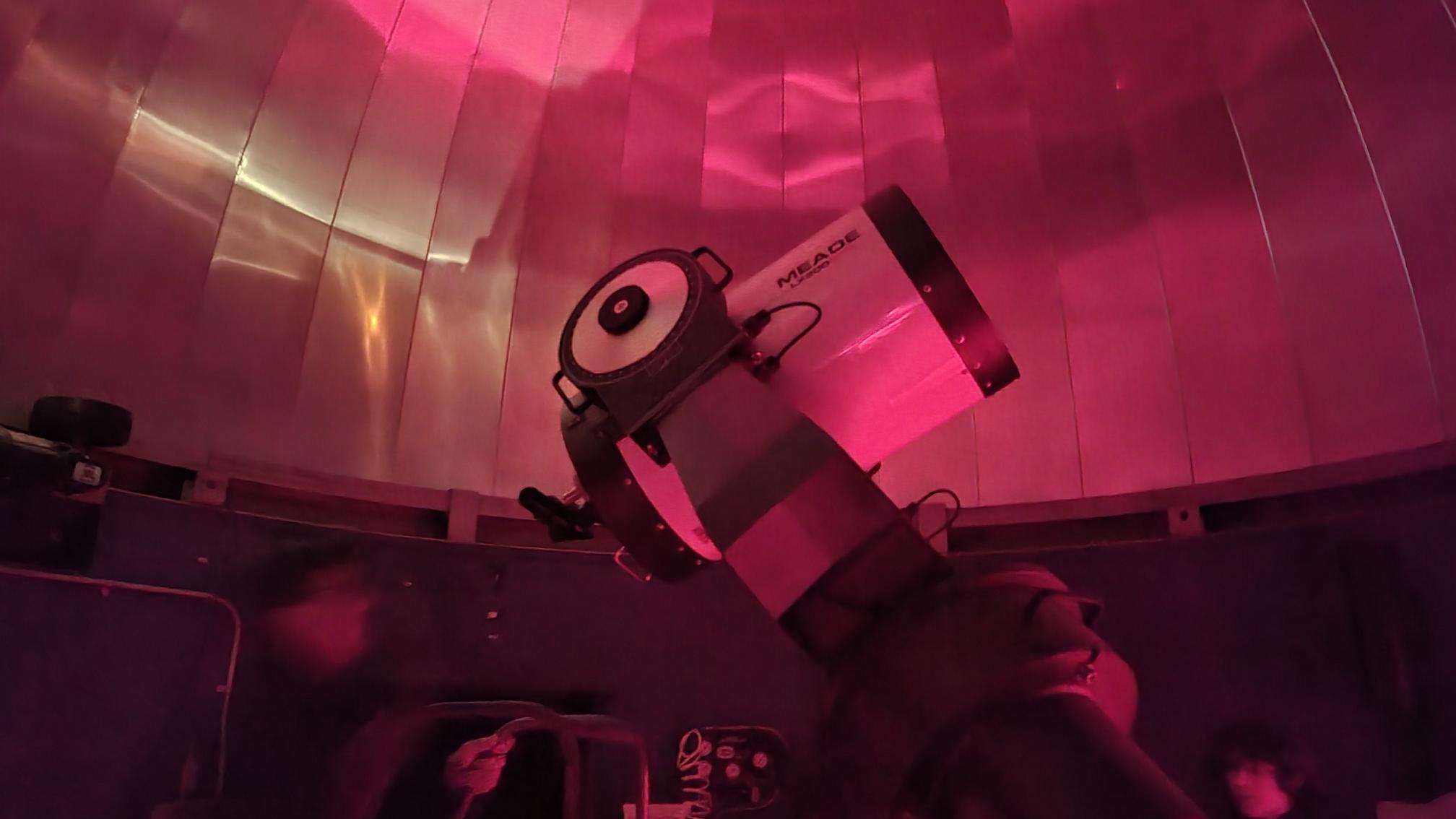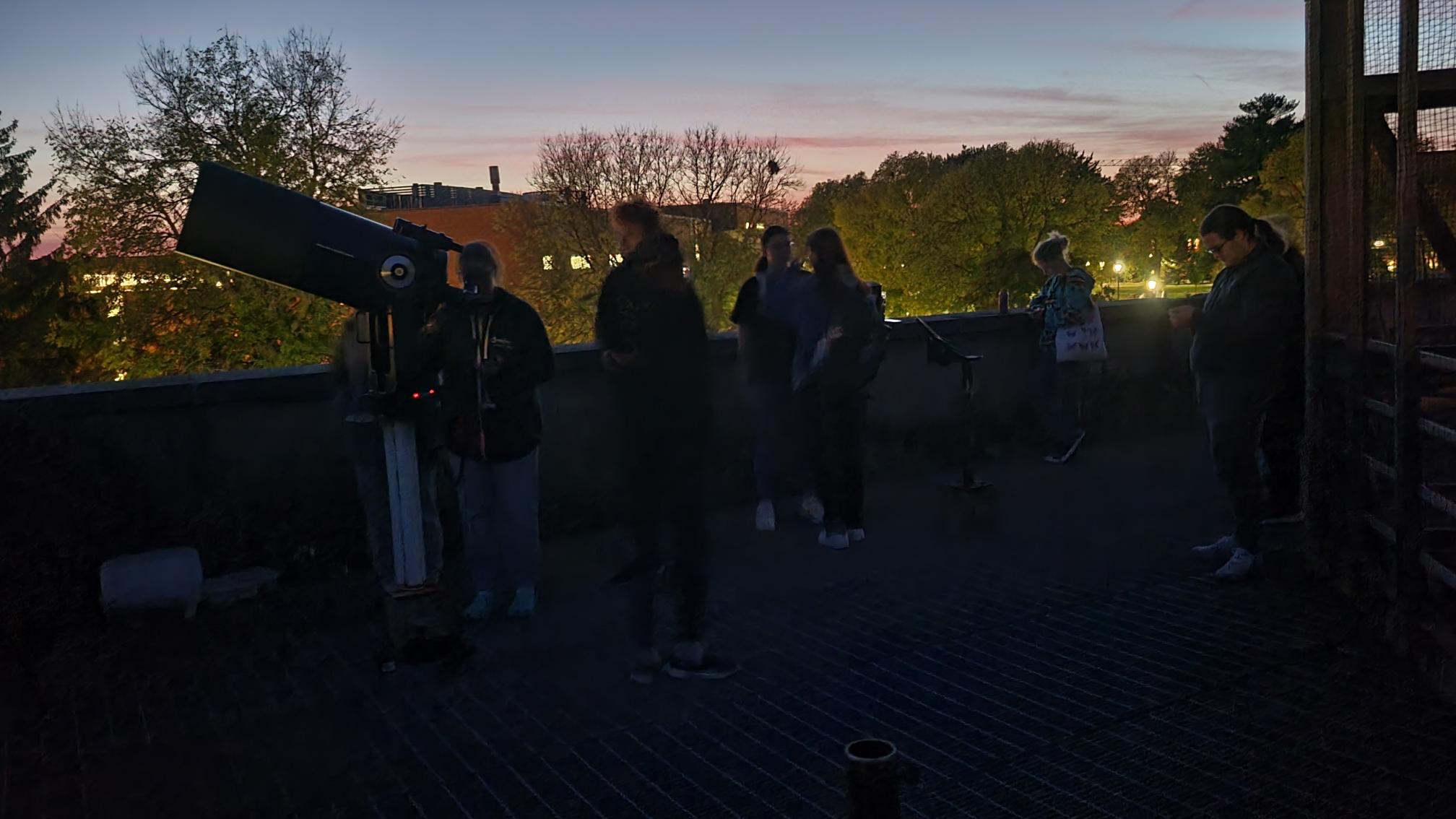UNIVERSITY OF WISCONSIN River Falls
Physics
Observatory, Planetarium, and Sundial
Astronomy Talks and Viewings
No Astronomy talk is currently scheduled. We will be sure to add this information whenever that changes.
Next Telescope Session: Wednesday, May 7, 2025, 9:00-10:30 p.m.
A 1st Quarter Moon will be seen after sunset, with prominent features along the night/day terminator. Venus and Saturn are visible about an hour before sunrise, so we'll miss those beauties, but Jupiter and its four largest moons will be a great sight near the horns of Taurus and Mars will be eastward past the Gemini twins. We'll also scan for the usual favorite (or obscure) globular clusters, binaries, and the Andromeda galaxy. I continue to hope that we'll be lucky enough to witness the rare (~80 years) nova in T Coronae Borealis since it has been fluctuating up and down by nearly a full magnitude during the past several weeks but clearly any predictions are a bit of a gues since last year's prediction is now many months overdue.
Last Telescope Session: Wednesday, Apr. 16, 2025, 9:00-10:00 p.m.
A last minute decision when they sky cleared enough for a quick peak. We had no Moon above the horizon yet but saw Jupiter and its four big moons along with reddish Mars. A bit of a haze made seeing the Great Hercules globular cluster difficult but the smudge was visible, along with a few other smudges for galaxies Andromeda and M81 & M82. The Orion Nebula was clear, while the dramatic brightening for the T Coronae Borealis nova explosion is still on its way to Earth and has yet to arrive.
First Spring Telescope Session: Thursday, Mar. 6, 2025, 8:00-9:30 p.m.
A waxing crescent Moon will be seen after sunset, with prominent features along the night/day terminator. Saturn will have vanished behind the Sun on Feb 28 so we'll have to wait to see it again, though Saturn's rings are now edge-on so we would have trouble seeing them even if we saw the planet. Bright Venus, Jupiter (and it's four large moons), and Mars will all be visible in a parade across the sky (Mercury could be visible though it may not be above the obstructions on our western horizon for very long after sunset, and Uranus is a mere dot in the night sky even with the telescope zooming in), plus assorted globular star clusters, binary stars, and the Andromeda galaxy. I continue to hope that we'll be lucky enough to witness the rare (~80 years) nova in T Coronae Borealis, though the odds on that appear unreliable after last year's prediction is now months overdue.
Third Fall Telescope Session: Monday, Nov. 11, 2024, 7:30-9:00 p.m.
A waxing gibbous Moon was visible briefly before it set behind the University Center. Many saw at Saturn and it's beautiful super-thin rings nearly edge-on, its large Moon Titan, the great Hercules globular star cluster, the Andromeda galaxy, and the red/blue binary star system Albireo in Cygnus.
Second Fall Telescope Session: Monday, Oct. 7, 2024, 8-10 p.m.
A waxing crescent Moon was seen by those who arrived early, otherwise we gazed at Saturn and it's beautiful rings nearly edge-on, globular star clusters, the Andromeda galaxy, binary stars, and would have to wait until another night to be lucky enough to witness a rare (every 80 years) nova in T Coronae Borealis, predicted with 95% chance to go nuclear sometime this Fall. We appreciate the great patience shown by the enormous crowd in attendance previously.
First Fall Telescope Session: Monday, Sept. 9, 2024, 8:30-10 p.m.
A waxing crescent Moon provided nice shadows for features early. So far we have not been witness the rare (every 80 yr) nova in T Coronae Borealis, so maybe next time, Saturn's rings impressed as always, plus lots more!
Partial Solar Eclipse: Monday, Apr. 8, 2024, start 12:48 max 2:02 end 3:14 p.m.
At maximum the Moon will block 3/4 of the Sun. We'll have naked-eye solar-safe viewing glasses available along with multiple telescopes and binoculars with solar filters to enable safe close-up views from the area around the UWRF Observatory.
The Observatory
The UWRF Observatory is located on the third floor of Centennial Science Hall (CSH) - south stairwell, 511 S. 6th St. Observatory viewings and talks are free and open to all age groups. Objects to be seen include planets, globular clusters, open clusters, nebulae, galaxies, moons, and double star systems.
If there is a presentation scheduled, it will be held in 271 CSH before viewing begins. If the night is clear, all are welcome to come up to the observatory immediately afterward.
Observatory Viewing - Assistance
If you need assistance, please let us know. Elevator access to the third floor telescope lobby is available and we will assist you to the observing deck or inside the dome if you would like!
Weather
Check this page after 6 p.m. for any weather updates in case skies are not conducive to viewing, or call 715-425-4630. If in doubt, use your own judgement and check weather.com. If inclement weather precludes viewing, the talk will always be held if there is a talk scheduled.
Clear Sky Chart
(opens in a new window)
Please contact Glenn Spiczak if you would like to be added to the stargazers email list or have any cosmic questions about what we see (or don't see, for dark matter or dark energy) in our amazing universe.
Telescopes
The Observatory is equipped with a 16-inch Meade computer-controlled LX200GPS mounted under the dome, three portable telescopes (two 12-inch Meade LX200 and one 18-inch Obsession Dobsonian), Coronado SolarMax60 and PST Solar Telescopes. UWRF also has two parallel RadioJOVE telescopes (currently awaiting a new location), and a number of QuarkNet cosmic ray air shower detectors.
The Digital-Dome Planetarium
If your school or organization would like a show please contact Glenn Spiczak with a wide range of possible days and times that can work. We can support roughly 1-2 shows per week so the sooner you schedule the more likely we'll be able to find a spot.
The Richard D. Swensen Sundial
The sundial on the Kleinpell Fine Arts (KFA) building was designed by faculty emeriti John Shepherd. Find it on the outside south wall of KFA, located on Cascade Avenue just west of Centennial Science Hall. It faces the University Center (UC) along the main east-west walkway through the center of campus. This sundial is one of the most accurate in North America!
A history and directions for reading the sundial are available at How to Read Sundial.
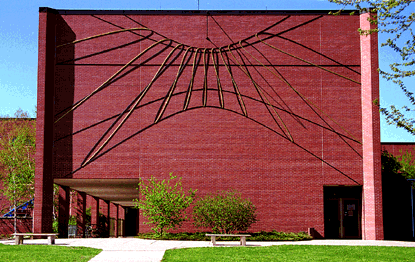
For any questions about events or to plan a visit, please contact:
Glenn Spiczak
Physics Department Chair, Professor
Office: 125 Centennial Science Hall
Phone: 715-425-4630
Email: glenn.spiczak@uwrf.edu
Partial Solar Eclipse Observation Event
Open Sky and Telescopic Views of the partial solar eclipse on Oct 14, 2023.
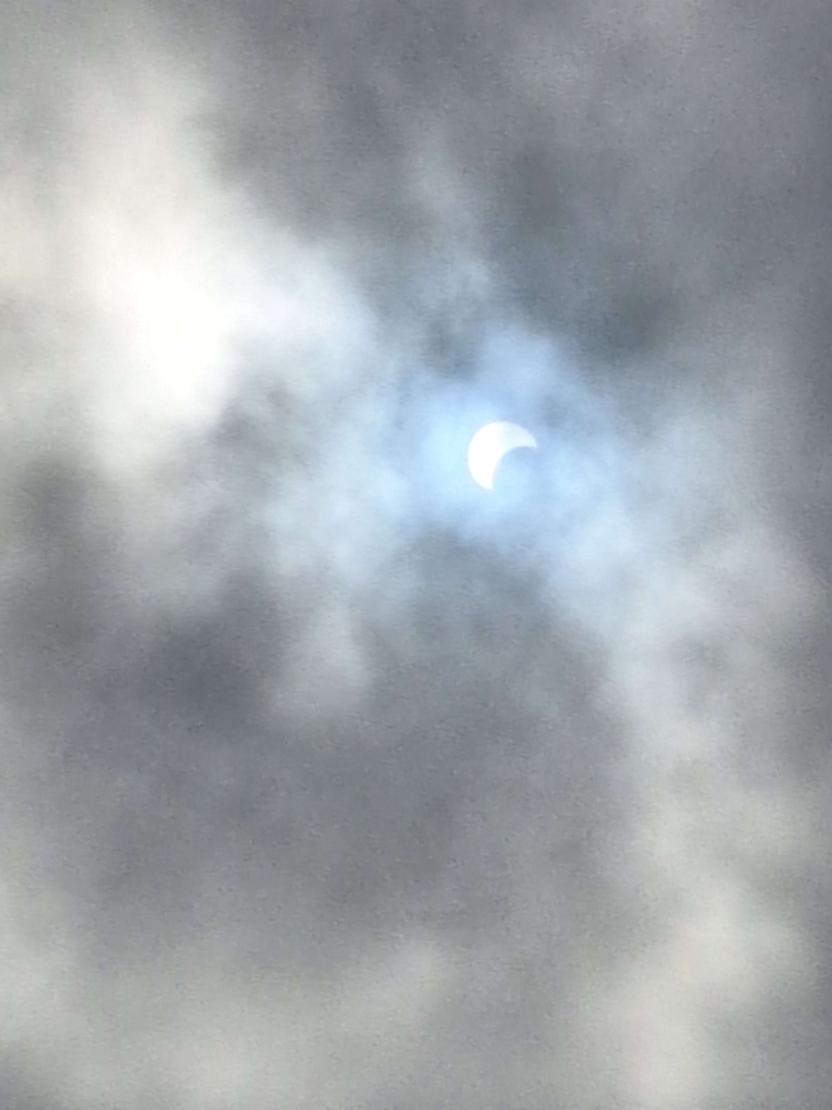
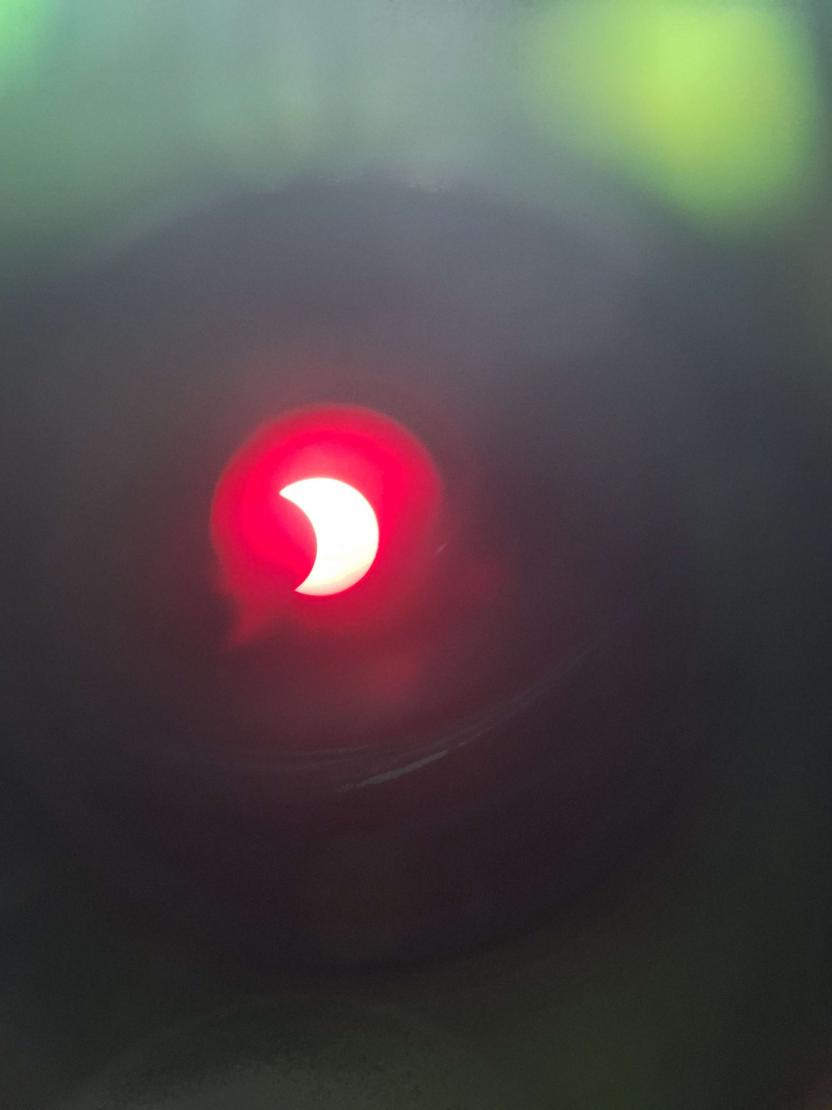
Stargazing Links
- Absolute Astronomy: Messier Objects
- Spacewatch: Skywatching learn about what's up in our sky
- Sky & Telescope: monthly commentary
- Astronomy for Children
- Award winning daily science radio series with a variety of articles, teacher resources, kids stuff, etc.
- Phil Harrington's StarWare, advice and information page for amateur astronomers
- NASA's StarChild site: for young (and old) astronomers.
- Hawaiian Astronomical Society: Caldwell Objects






